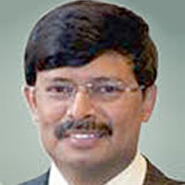IT adoption is a necessity, but it is a complicated process. Both assertions are equally correct. Prasenjit Saha, CEO, Infrastructure Management Services and Security Business, Happiest Minds Technologies, tries to give an insight into how IT applications and processes today form the foundation of any business, through Infrastructure Management Services (IMS)
Traditionally, IT was viewed as a support function that helped increase efficiencies and reduce costs. The CIO’s role was limited to ensuring business-as-usual, safeguarding enterprise data and keeping pace with changing business demands. Over time, IT evolved to support a wide range of functionalities. Today, IT applications and processes form the lifeline or the foundation of any business, it is now viewed as a critical component of business strategy rather than being relegated to support function.
A volatile business environment coupled with rapidly advancing technologies that disrupt the status quo is the new normal. Even as they launch new applications and services to meet the ever evolving expectations of the digital customer, businesses have to be ready to replace them with something newer and better a few months down the line. Rising customer preference for the digital channel experience has increased the number of digital touchpoints in a customer’s journey. Each of these touchpoints is dependent on the underlying technology infrastructure-an invisible lever that plays a key role in engaging the customer and delivering a positive experience.
As businesses scramble to migrate to the latest technology trend, they are hindered by a legacy IT environment, which was not designed to handle such demands. Multiple locations, high bandwidth needs, a mobile and distributed workforce and overwhelming terabytes of data further complicate the situation. This essentially means that organisations need to transform their infrastructure to be more responsive, more flexible and more agile in enabling a quick transition to emerging technologies, if they are to grab a competitive advantage. And, as businesses strive for a quick and efficient transformation, they are realising that the right infrastructure can play the role of a business enabler and growth driver while also serving as a catalyst for innovation by providing the ability to exploit new technologies.
IT infra transformation
Most infrastructure transformation programmes navigate three distinct stages: consolidation and standardisation, shared infrastructure and IT-as-a-Service (ITaaS).
In the first stage, the emphasis is on eliminating silos and reducing complexity and costs while improving efficiency and controls through three important strategies — data center consolidation, infrastructure rationalisation and virtualisation. These initiatives help align IT investments with business results.
The next stage focuses on optimising RoI through improved utilisation of IT assets and resources. The managed services model allows for improvement in operations and cutting of running costs by outsourcing certain IT infra functions.
Further, three steps are involved in this shared infrastructure model:
- Creating infrastructure layers corresponding to different service levels, which allows businesses greater choice in selecting and paying for the desired quality, service level, performance and capacity.
- Enhancing resource utilisation through automated storage tiering, virtualisation, and de-duplication to cut costs.
- Using management tools to better manage the multiple IT layers to pave the way for better service availability and performance.
The final stage involves adoption of Cloud Computing technologies for transition towards an ITaaS model, spanning computing, storage, backup, disaster recovery, data center and network. Designing a Cloud strategy with the right mix of internal and external services is key to optimising the technology infrastructure, so that it supports business needs.
Innovation is the name of the game and is crucial to gaining a competitive edge in today’s marketplace. Businesses have realised the potential of the right technology infrastructure to promote strategic innovation and deliver a competitive advantage.
Going forward, business executives will leverage IT infrastructure to not only increase efficiencies and reduce costs, but also to drive topline growth and achieve business success.

Prasenjit is a former Happiest Mind and this content was created and published during his tenure.





